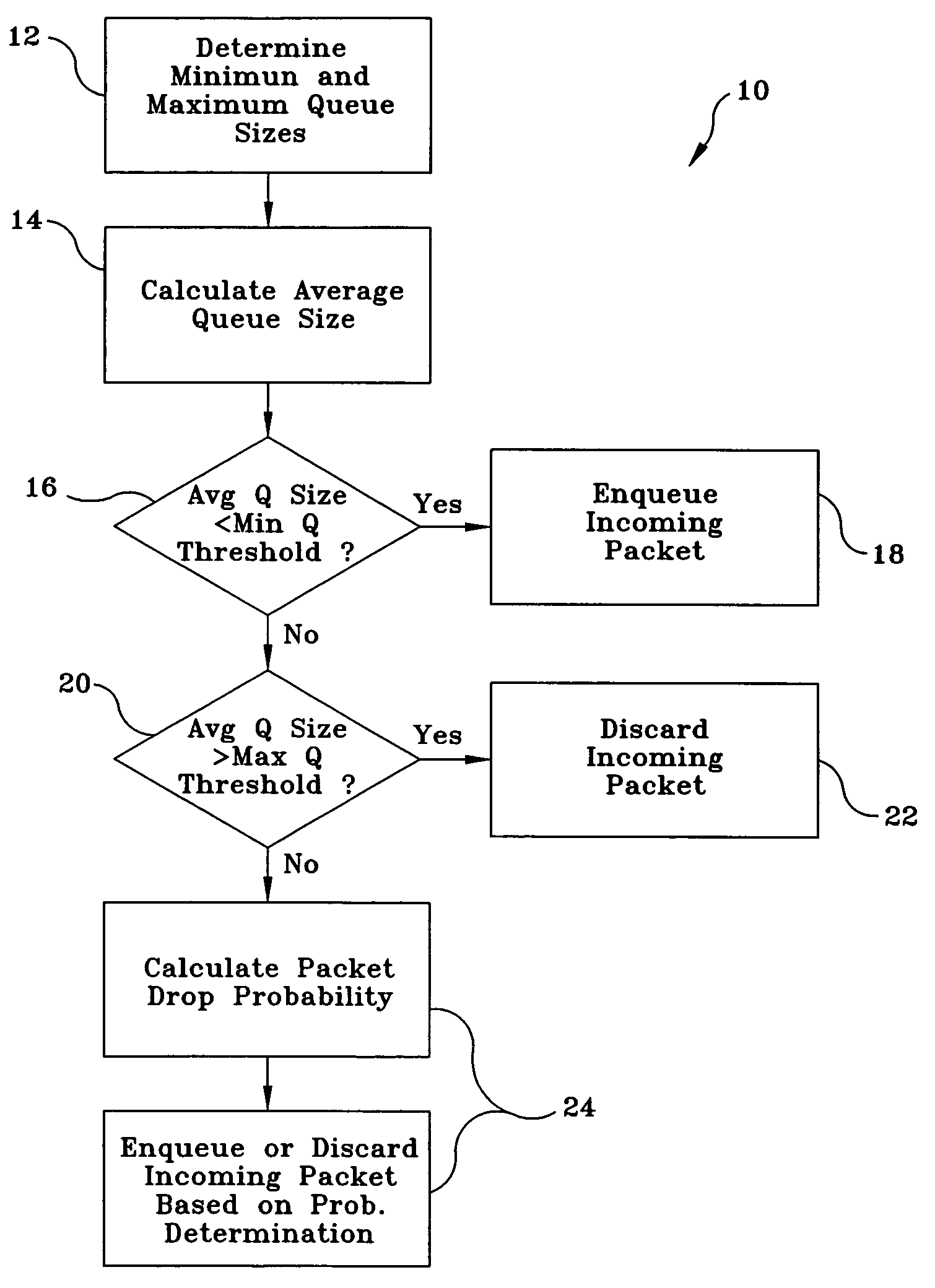Single cycle weighted random early detection circuit and method
a single-cycle weighted random early detection and traffic management technology, applied in data switching networks, frequency-division multiplexes, instruments, etc., can solve problems such as network congestion, communication process bottlenecks, delays in communication receipt, etc., to reduce queue congestion, optimize packet delivery, and reduce packet congestion
- Summary
- Abstract
- Description
- Claims
- Application Information
AI Technical Summary
Benefits of technology
Problems solved by technology
Method used
Image
Examples
Embodiment Construction
[0022]The present invention provides an intelligent system and method for proactive, discriminating congestion control on a per flow basis of packets traversing the Internet. In various embodiments, a Weighted Random Early Detection (WRED) monitors the incoming packet queue and optimizes distribution versus discard of packets to stabilize queue length. During optimized discard conditions, the system and method discern a relative priority among packets, distributing packets with a relatively high priority and discarding packets with a relatively low priority. Additionally, packet traffic may be policed for packet types, quantity or other criteria and discarded. Typically, the present invention performs in periodic mode, demand mode or both. A skilled artisan will recognize that the system and method disclosed herein may be implemented as a hardware solution, a software solution, or a combination thereof.
[0023]Referring specifically to the drawings, wherein like references are made to...
PUM
 Login to View More
Login to View More Abstract
Description
Claims
Application Information
 Login to View More
Login to View More - R&D
- Intellectual Property
- Life Sciences
- Materials
- Tech Scout
- Unparalleled Data Quality
- Higher Quality Content
- 60% Fewer Hallucinations
Browse by: Latest US Patents, China's latest patents, Technical Efficacy Thesaurus, Application Domain, Technology Topic, Popular Technical Reports.
© 2025 PatSnap. All rights reserved.Legal|Privacy policy|Modern Slavery Act Transparency Statement|Sitemap|About US| Contact US: help@patsnap.com



